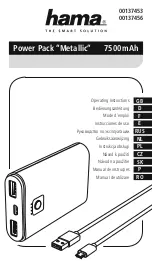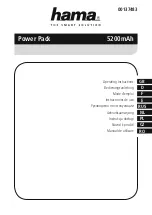
15
ASSEMBLY & OPERATION
ASSEMBLE INTERCHANGEABLE
SCRAPER BLADES TO THE HANDLE
The scraper handle can be assembled with
the isosceles, convex or concave scraper
profiles.
1. Remove the outer nut (1) from the
scraper handle (2) (Fig. 4).
2. Place the appropriate scraper profile
(3) onto the threaded portion of the
scraper handle.
NOTE:
Match the “D” shape of the
profile to the threaded handle.
3. Thread the outer nut back onto the
handle and tighten it with two 12 mm
wrenches.
NOTE:
Do not over tighten the nuts or
you will strip the threads.
INSTALL APPROPRIATE DEFLECTOR
TO THE HEAT GUN NOZZLE
The heat gun comes with four nozzles that
will create an air flow shape best suited for
each heating application:
Wide jet
– use for heating a wide area
at one time
Air wrap
– use for limiting the spread
of the air stream
Coned reducer
– use for concentrating
the air flow onto a small area
Curved head shield
– use for shielding
sensitive areas from the direct heat.
DANGER:
Never attempt to
change or attach a deflector to the heat
gun immediately after it has been
turned ON. The nozzle will be extremely
hot. Always wear gloves when changing
or attaching a deflector.
Push the selected deflector (1) onto the
small end of the heat gun nozzle (2)
(Fig. 5).
NOTE:
The deflector is simply a friction fit
so it must be firmly pressed onto the small
end of the nozzle.
USING SAFETY STAND WHEN HOT
When heat gun is hot, always place it up
side down on its safety stand (1) (Fig. 6).
STRIPPING PAINT FROM DWELLING
The most common application for the heat
gun is in stripping paint from fascia, soffit
and siding of a dwelling (Fig. 7). Although
the heat gun will work extremely well in this
application, it is important to take specific
precautions and prevent potentially serious
mistakes.
Fig. 5
!
Fig. 6
Fig. 4
Содержание 54-6505-6
Страница 18: ...18 PARTS DIAGRAM MODEL 54 6505 6...





































